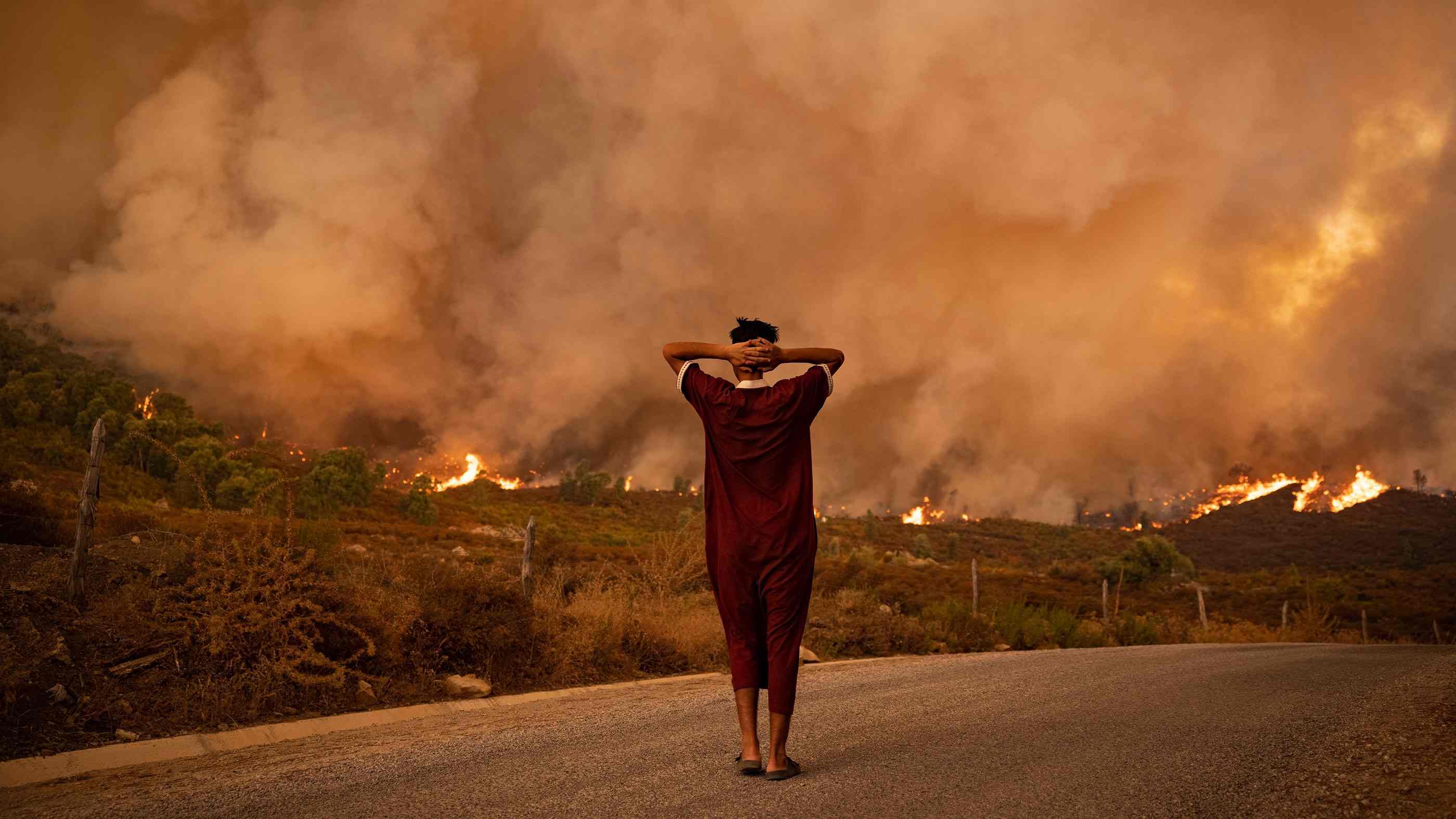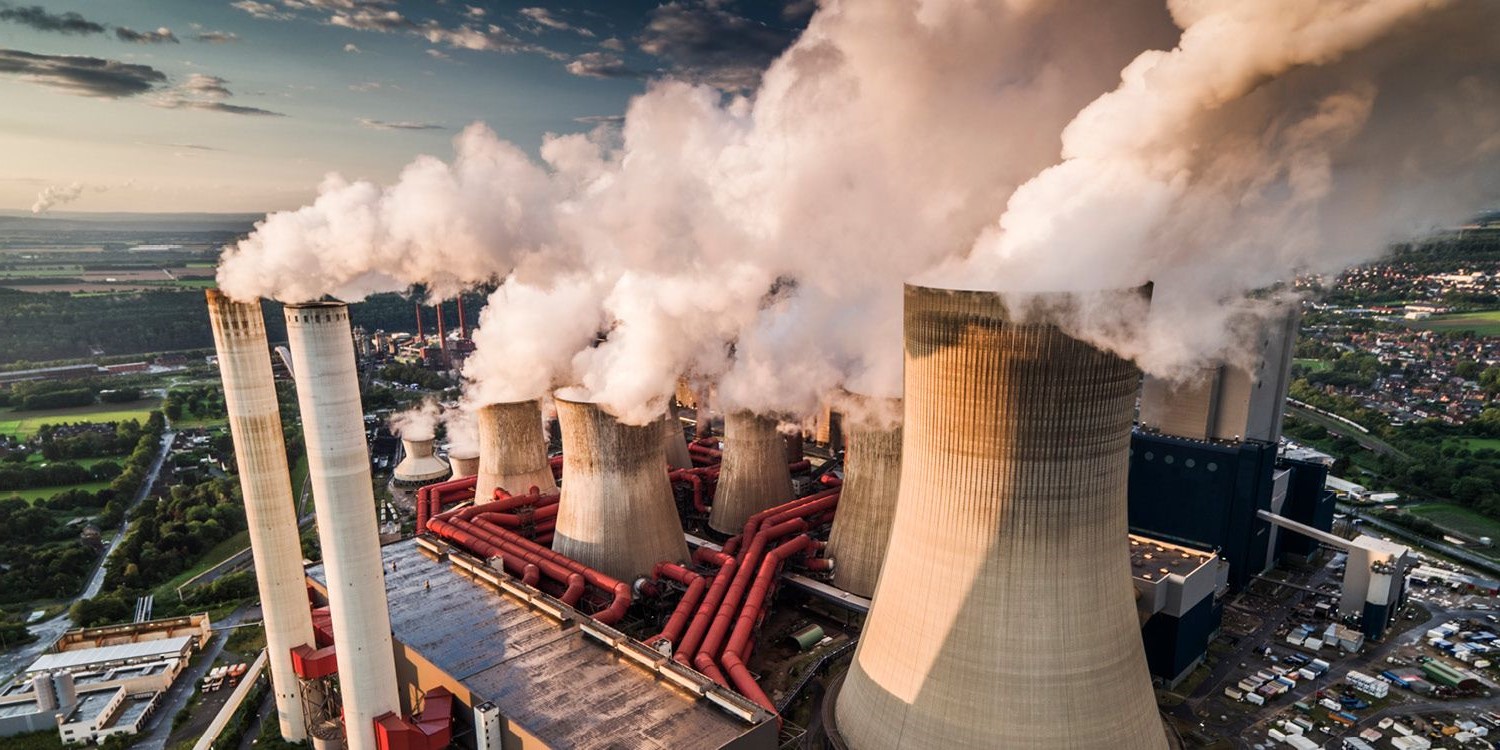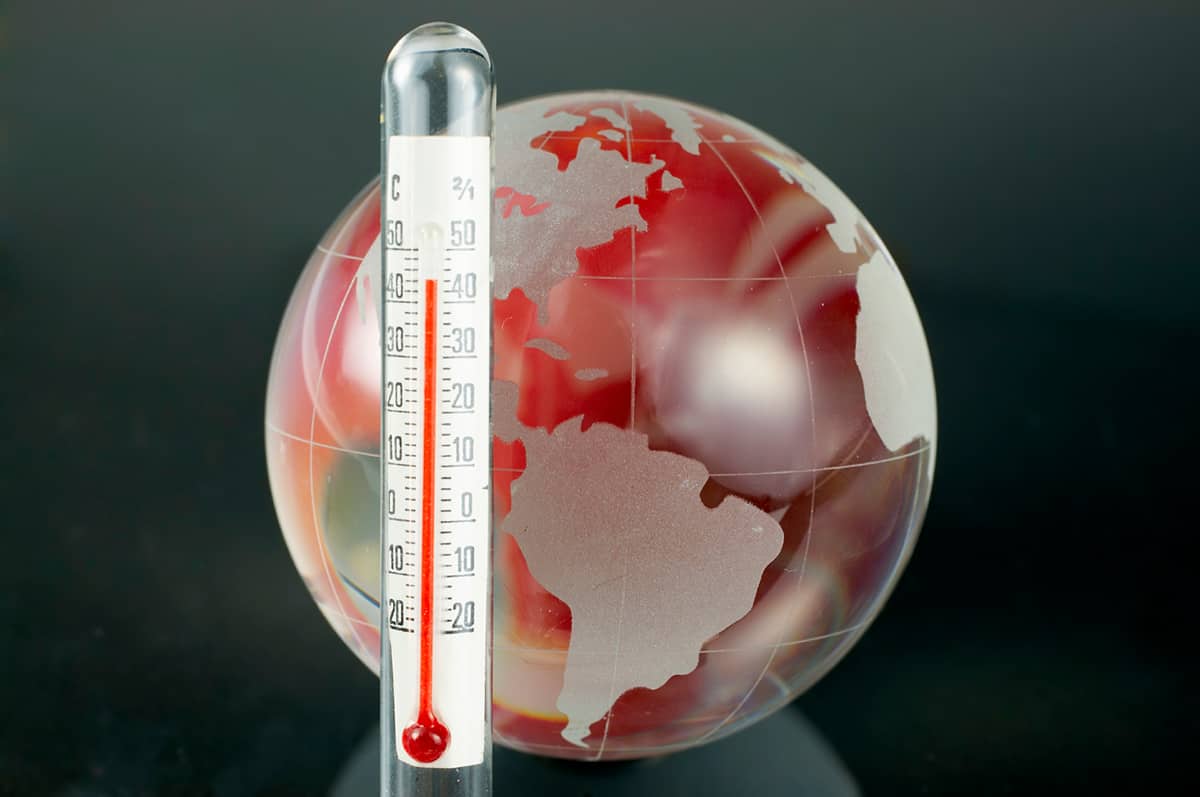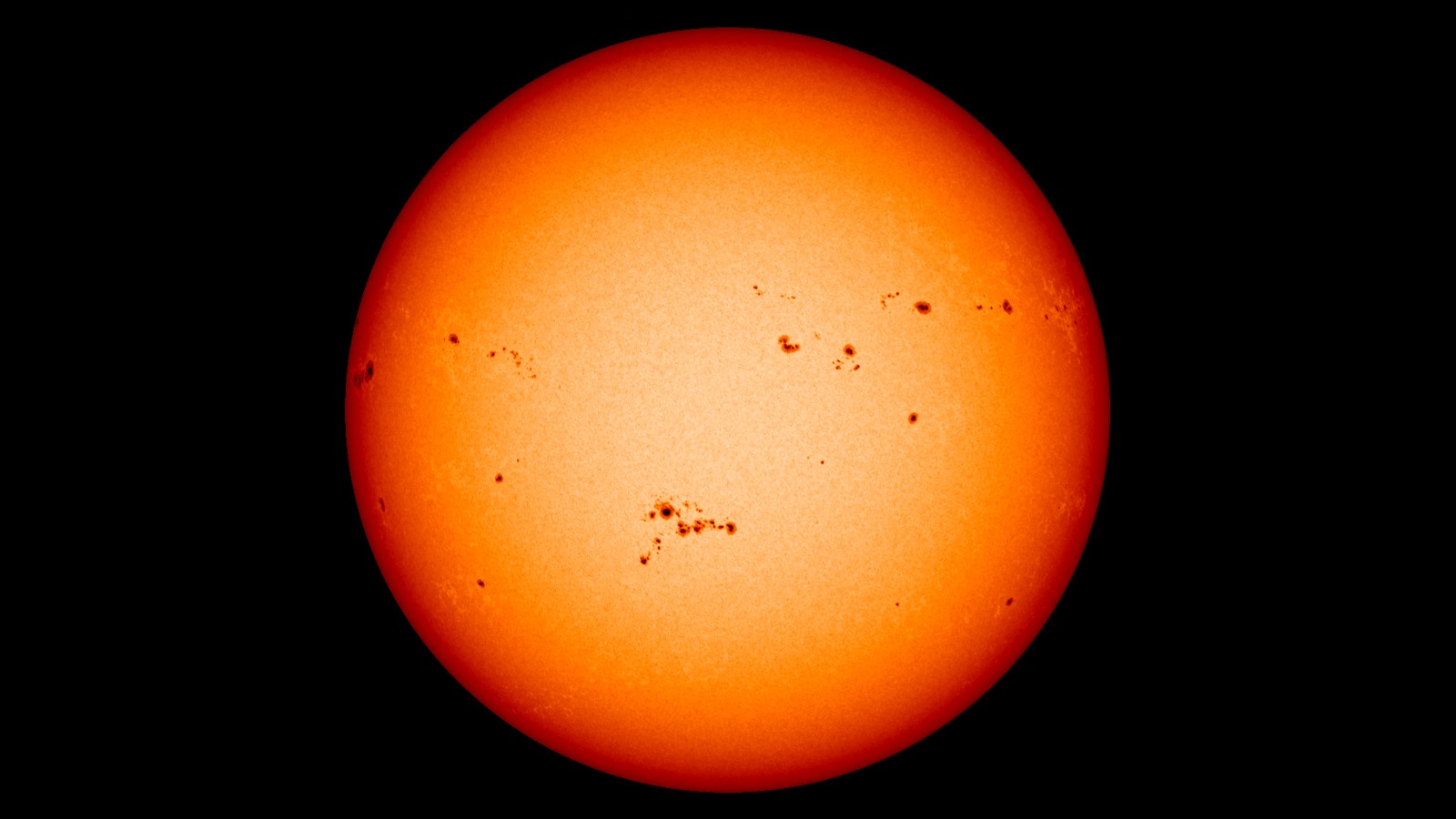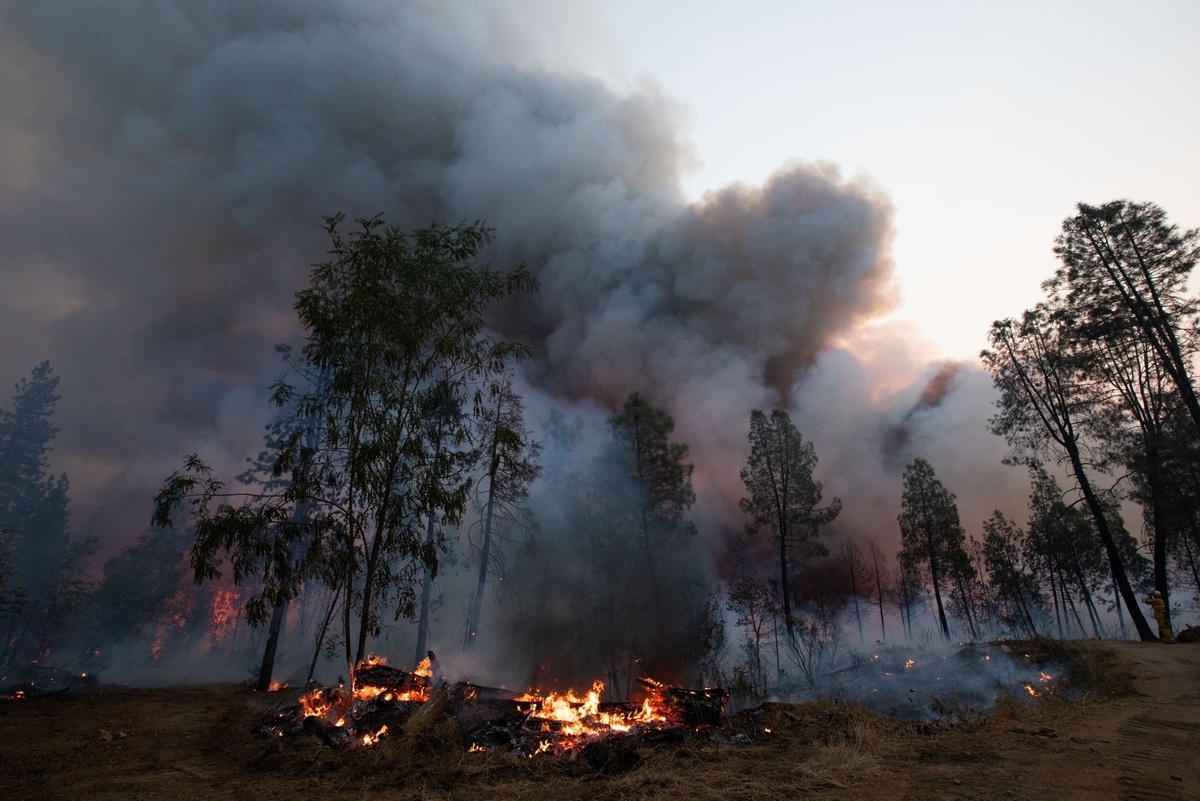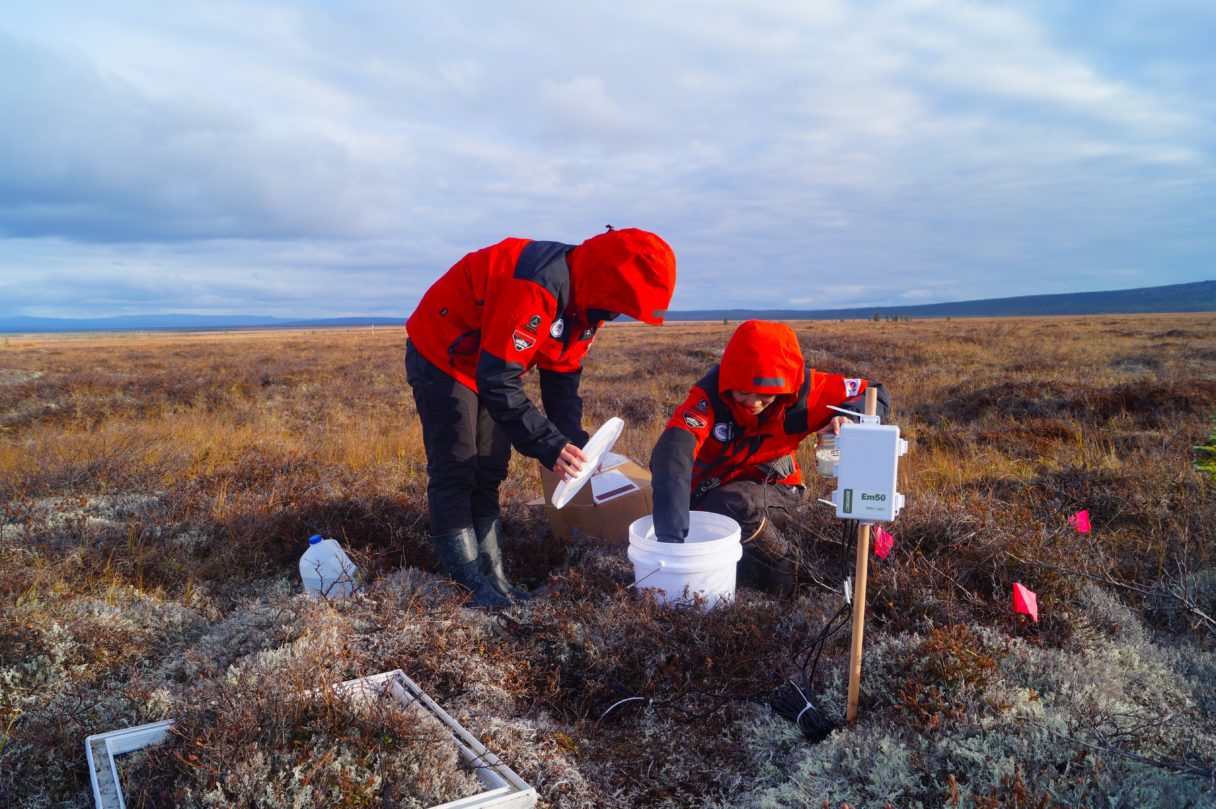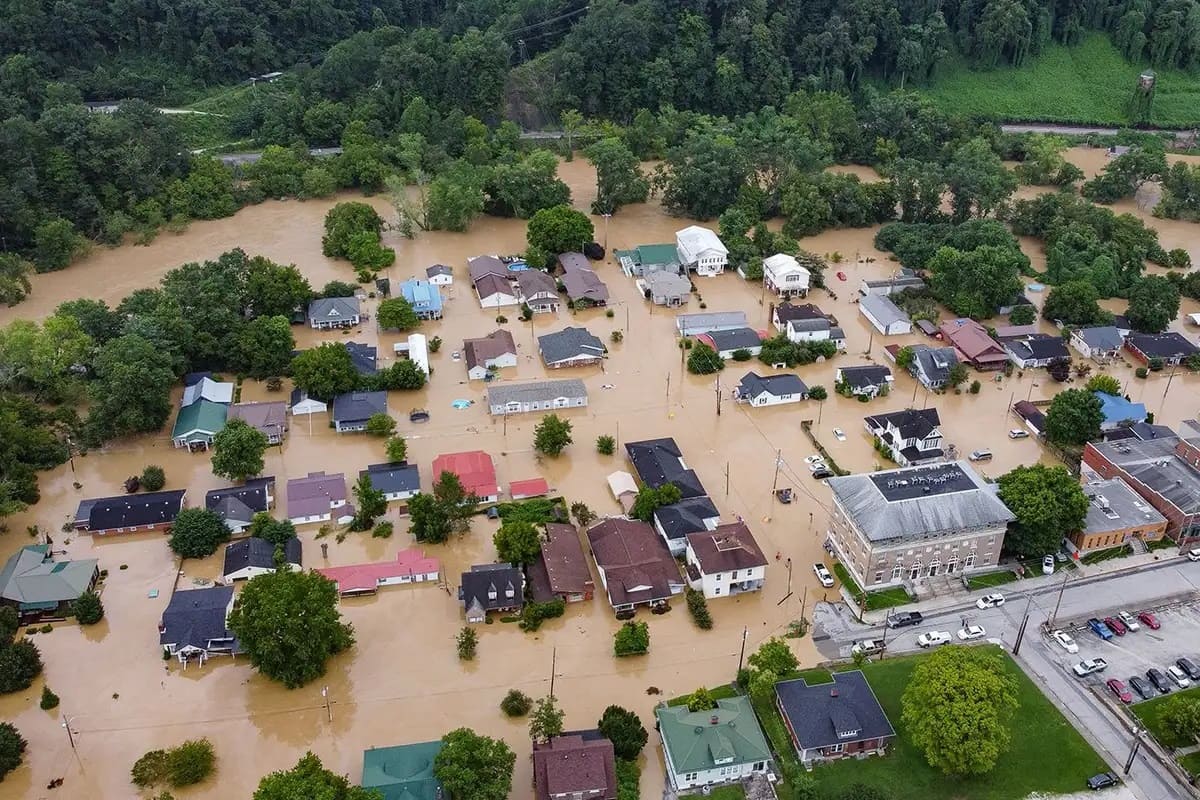Home>Weather and Climate>The Global Environmental Impact Of The Mount Pinatubo Eruption
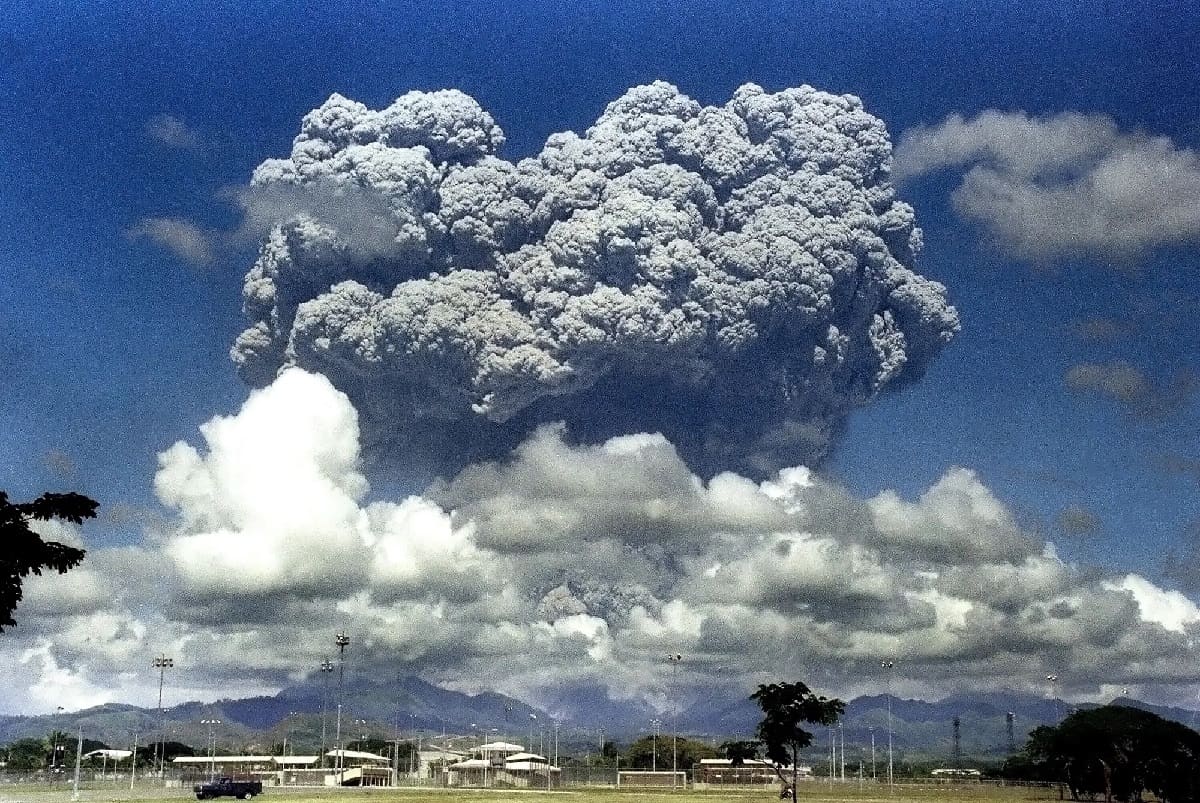

Weather and Climate
The Global Environmental Impact Of The Mount Pinatubo Eruption
Published: March 2, 2024
Learn about the weather and climate effects of the Mount Pinatubo eruption, and its global environmental impact. Understand the long-term consequences on the Earth's atmosphere.
(Many of the links in this article redirect to a specific reviewed product. Your purchase of these products through affiliate links helps to generate commission for Temperatures.com, at no extra cost. Learn more)
Table of Contents
Introduction
The eruption of Mount Pinatubo in 1991 stands as one of the most significant volcanic events in recent history, leaving a profound impact on the global environment. Situated in the Philippines, Mount Pinatubo's cataclysmic eruption sent shockwaves across the world, affecting not only the immediate vicinity but also the Earth's atmosphere and climate. This natural disaster serves as a poignant reminder of the immense power wielded by the forces of nature and the far-reaching consequences they can entail.
The eruption of Mount Pinatubo was a complex event that unfolded over a period of several days, culminating in a colossal explosion that spewed forth an enormous volume of ash, gases, and other volcanic materials. The sheer magnitude of this eruption resulted in widespread devastation, with the immediate vicinity bearing the brunt of the destruction. However, the reverberations of this cataclysmic event extended far beyond the Philippines, impacting various aspects of the global environment.
The aftermath of the eruption prompted extensive scientific inquiry and analysis, as researchers sought to comprehend the full extent of its impact. Through meticulous study and observation, the intricate web of consequences stemming from the eruption began to emerge, shedding light on the interconnectedness of Earth's environmental systems. From the physical alterations to the landscape to the far-reaching effects on climate and biodiversity, the Mount Pinatubo eruption left an indelible mark on the planet.
As we delve into the multifaceted impact of the Mount Pinatubo eruption, it becomes evident that this event serves as a compelling case study, offering valuable insights into the intricate dynamics of our planet's environmental equilibrium. By examining the repercussions of this volcanic upheaval, we gain a deeper understanding of the delicate interplay between geological phenomena, atmospheric processes, and the intricate web of life on Earth. The story of Mount Pinatubo's eruption is a testament to the profound influence that natural events can exert on the global environment, underscoring the need for vigilance and scientific inquiry in the face of such monumental occurrences.
The Physical Impact of the Eruption
The eruption of Mount Pinatubo unleashed a series of dramatic physical transformations in its immediate surroundings. The initial phase of the eruption was characterized by the expulsion of vast quantities of volcanic ash, which blanketed the landscape in a thick layer of fine particles. This ash fall had far-reaching consequences, causing widespread disruption to the natural environment and human settlements. The sheer volume of ash deposited by the eruption altered the topography of the region, burying entire landscapes under a shroud of gray debris. The once verdant terrain was transformed into a desolate expanse, as the ash settled and obscured the familiar features of the land.
In addition to the ash fall, the eruption of Mount Pinatubo also led to the release of pyroclastic flows, which are fast-moving currents of hot gas and volcanic matter. These deadly flows surged down the slopes of the volcano, engulfing everything in their path and leaving behind a trail of destruction. The intense heat and kinetic energy carried by the pyroclastic flows caused extensive damage to the surrounding ecosystems, obliterating vegetation and altering the contours of the land. The force of these flows reshaped the terrain, carving new channels and depositing layers of volcanic debris across the affected area.
Furthermore, the eruption triggered lahars, which are powerful mudflows resulting from the interaction of volcanic materials with water. The torrential rains that followed the eruption combined with the loose volcanic debris to form lahars, which cascaded down the slopes of Mount Pinatubo and surged through river valleys. These lahars wreaked havoc on the landscape, eroding soil, uprooting vegetation, and engulfing structures in their relentless path. The destructive force of the lahars altered the course of rivers and streams, leaving a trail of devastation in their wake.
The physical impact of the Mount Pinatubo eruption was profound, leaving a scarred and transformed landscape in its aftermath. The once picturesque terrain was marred by the deposition of ash, the ravages of pyroclastic flows, and the relentless onslaught of lahars. The immediate vicinity of the volcano bore witness to the raw power of nature, as the physical manifestations of the eruption reshaped the land and left an enduring imprint on the natural environment. The physical impact of the Mount Pinatubo eruption serves as a stark reminder of the formidable forces at play within the Earth's geophysical processes, underscoring the need for vigilance and preparedness in the face of such monumental events.
The Atmospheric Impact of the Eruption
The eruption of Mount Pinatubo had a profound impact on the Earth's atmosphere, triggering a cascade of effects that reverberated across the globe. One of the most significant consequences of the eruption was the injection of massive amounts of sulfur dioxide (SO2) and other gases into the stratosphere. These gases reacted with water vapor to form sulfate aerosols, which spread throughout the upper layers of the atmosphere. The presence of these aerosols had far-reaching implications for atmospheric processes, leading to a series of complex interactions that influenced global climate patterns.
The sulfate aerosols released by the eruption acted as a potent agent of change within the stratosphere, exerting a cooling effect on the Earth's surface. These aerosols served as a barrier, reflecting a portion of the incoming solar radiation back into space. As a result, the presence of sulfate aerosols in the stratosphere led to a reduction in the amount of sunlight reaching the Earth's surface, contributing to a temporary cooling of the planet. This phenomenon, known as "volcanic winter," resulted in lower average temperatures in the years following the eruption, impacting weather patterns and climatic conditions on a global scale.
Furthermore, the injection of sulfur dioxide into the stratosphere gave rise to a series of chemical reactions that altered the composition of the atmosphere. The conversion of sulfur dioxide to sulfate aerosols led to the depletion of ozone in the stratosphere, contributing to the thinning of the ozone layer. This reduction in ozone levels had implications for the Earth's ultraviolet (UV) radiation balance, potentially exposing living organisms to increased levels of UV radiation. The atmospheric impact of the Mount Pinatubo eruption thus extended beyond temperature changes, encompassing alterations in the chemical composition of the atmosphere and its interaction with solar radiation.
In addition to influencing temperature and atmospheric chemistry, the eruption of Mount Pinatubo also had implications for weather patterns and circulation systems. The cooling effect induced by the presence of sulfate aerosols in the stratosphere altered the dynamics of atmospheric circulation, leading to shifts in global wind patterns and precipitation regimes. These changes in atmospheric circulation had implications for regional climates, influencing rainfall patterns and weather phenomena in various parts of the world. The atmospheric impact of the Mount Pinatubo eruption thus underscored the interconnected nature of Earth's environmental systems, highlighting the intricate interplay between geological events and atmospheric processes.
The atmospheric impact of the Mount Pinatubo eruption serves as a compelling illustration of the profound influence exerted by volcanic events on the Earth's atmosphere. By injecting copious amounts of gases and aerosols into the stratosphere, the eruption triggered a chain of atmospheric responses that manifested in diverse ways, from global cooling to alterations in atmospheric chemistry and circulation patterns. This atmospheric upheaval stands as a testament to the intricate interconnections that define the Earth's environmental dynamics, emphasizing the need for comprehensive understanding and vigilance in the face of such monumental events.
The Impact on Climate Change
The eruption of Mount Pinatubo in 1991 had a profound impact on global climate patterns, ushering in a period of significant climatic perturbations. One of the most notable consequences of the eruption was the induction of a temporary cooling effect on the Earth's surface, a phenomenon commonly referred to as "volcanic winter." The release of sulfate aerosols into the stratosphere following the eruption led to the scattering of incoming solar radiation, resulting in a reduction in the amount of sunlight reaching the Earth's surface. This diminished solar input contributed to a discernible cooling of the planet, with lower average temperatures recorded in the years following the eruption.
The cooling effect induced by the presence of sulfate aerosols in the stratosphere had far-reaching implications for global climate patterns. The altered distribution of solar energy across the Earth's surface influenced atmospheric circulation, precipitation patterns, and regional climates. The cooling effect of the volcanic aerosols disrupted established climate norms, leading to anomalous weather phenomena and shifts in precipitation regimes in various parts of the world. These climatic perturbations underscored the intricate interplay between geological events and the delicate balance of Earth's climate systems, highlighting the susceptibility of global climate patterns to external forcings.
Furthermore, the impact of the Mount Pinatubo eruption on climate extended beyond immediate temperature changes, encompassing alterations in atmospheric circulation and weather dynamics. The cooling induced by the eruption influenced the behavior of atmospheric circulation systems, leading to modifications in global wind patterns and precipitation distribution. These changes in atmospheric circulation had implications for regional climates, influencing the frequency and intensity of weather events in diverse geographical regions. The eruption of Mount Pinatubo thus served as a poignant reminder of the interconnected nature of Earth's climate systems, emphasizing the potential for volcanic events to instigate widespread climatic repercussions.
The impact of the Mount Pinatubo eruption on climate change stands as a testament to the intricate interconnections that define the Earth's environmental dynamics. By triggering a cascade of climatic perturbations, the eruption underscored the vulnerability of global climate patterns to external disturbances, shedding light on the complex interplay between geological phenomena and the delicate equilibrium of Earth's climate systems. The legacy of the Mount Pinatubo eruption serves as a compelling case study, offering valuable insights into the profound influence exerted by volcanic events on global climate dynamics, and emphasizing the need for comprehensive understanding and vigilance in the face of such monumental environmental upheavals.
The Impact on Biodiversity
The eruption of Mount Pinatubo in 1991 had a profound and multifaceted impact on the biodiversity of the surrounding ecosystems. The cataclysmic event unleashed a series of environmental upheavals that reverberated through the natural habitats, exerting a transformative influence on the delicate web of life in the region. The physical and chemical alterations wrought by the eruption left an indelible mark on the biodiversity of the area, reshaping ecological dynamics and posing significant challenges to the survival of numerous species.
One of the most immediate and visible consequences of the eruption was the extensive destruction of vegetation and habitats in the vicinity of Mount Pinatubo. The pyroclastic flows and lahars that cascaded down the slopes of the volcano obliterated vast swathes of vegetation, leaving behind a scarred and desolate landscape. The once lush and biodiverse ecosystems were engulfed by a deluge of volcanic debris, disrupting the intricate balance of flora and fauna that had thrived in the region. The loss of habitat and the decimation of plant species had cascading effects on the entire food web, impacting the survival and reproductive patterns of numerous animal species.
Furthermore, the deposition of volcanic ash and other materials altered soil composition and fertility, posing significant challenges to the regrowth of vegetation and the reestablishment of ecological balance. The influx of ash and volcanic debris led to soil erosion and nutrient depletion, further exacerbating the challenges faced by the surviving plant and animal populations. The disruption of soil dynamics and nutrient cycles had far-reaching implications for the biodiversity of the region, influencing the availability of resources and the capacity of ecosystems to support diverse forms of life.
In addition to the direct physical impact on habitats and vegetation, the eruption of Mount Pinatubo also had implications for aquatic ecosystems. The lahars generated by the eruption surged through river valleys, altering the course of rivers and streams and disrupting aquatic habitats. The sedimentation and alteration of water quality resulting from the influx of volcanic materials posed significant challenges to the survival of aquatic species, further amplifying the ecological repercussions of the eruption.
The impact of the Mount Pinatubo eruption on biodiversity serves as a poignant reminder of the vulnerability of natural ecosystems to large-scale environmental disturbances. The transformative influence of the eruption on habitats, vegetation, and aquatic ecosystems underscored the intricate interconnections that define biodiversity, emphasizing the need for comprehensive conservation efforts and ecological restoration in the aftermath of such monumental environmental upheavals.
Read more: The Impact Of Global Warming Since 1998
The Impact on Human Health
The eruption of Mount Pinatubo in 1991 had far-reaching implications for human health, posing significant challenges to the well-being of individuals in the affected regions. The release of volcanic ash, gases, and other hazardous materials during the eruption precipitated a series of health concerns, ranging from respiratory issues to waterborne diseases, and mental health challenges.
One of the most immediate health risks posed by the eruption was the inhalation of volcanic ash particles, which can have detrimental effects on respiratory function. The fine particles of ash, when airborne, can be inhaled deeply into the lungs, leading to respiratory distress and exacerbating pre-existing respiratory conditions. The inhalation of volcanic ash can cause irritation of the respiratory tract, coughing, and breathing difficulties, particularly in vulnerable populations such as the elderly, children, and individuals with pre-existing respiratory ailments.
Furthermore, the eruption triggered the generation of lahars, which contaminated water sources and posed significant risks of waterborne diseases. The influx of volcanic materials into rivers and streams led to the contamination of water supplies, increasing the likelihood of waterborne illnesses such as gastrointestinal infections and parasitic diseases. The disruption of water sources and the deterioration of water quality posed significant challenges to public health, necessitating urgent measures to ensure access to safe and potable water for the affected communities.
In addition to the immediate physical health risks, the eruption of Mount Pinatubo also had implications for mental health and well-being. The upheaval and displacement caused by the eruption, coupled with the loss of homes, livelihoods, and community structures, had profound psychological impacts on the affected populations. The trauma and stress resulting from the cataclysmic event posed significant challenges to mental well-being, necessitating comprehensive support and mental health services for the affected individuals.
The impact of the Mount Pinatubo eruption on human health serves as a poignant reminder of the vulnerability of communities in the face of large-scale environmental disasters. The multifaceted health risks posed by the eruption underscore the need for comprehensive public health interventions, including respiratory health support, access to clean water, and mental health services, to mitigate the immediate and long-term health consequences of such monumental environmental upheavals.
Conclusion
The eruption of Mount Pinatubo in 1991 stands as a testament to the profound and far-reaching impact that geological events can exert on the global environment. From the physical transformations of the landscape to the atmospheric and climatic repercussions, the cataclysmic eruption left an indelible mark on the intricate web of Earth's environmental systems. The legacy of Mount Pinatubo serves as a compelling case study, offering valuable insights into the interconnectedness of geological phenomena, atmospheric processes, and the delicate balance of biodiversity.
The physical impact of the eruption, characterized by the deposition of ash, the ravages of pyroclastic flows, and the relentless onslaught of lahars, reshaped the terrain and left a lasting imprint on the natural environment. The atmospheric repercussions, including the injection of sulfur dioxide and the formation of sulfate aerosols, triggered a cascade of effects that influenced global climate patterns, leading to a temporary cooling of the planet and alterations in atmospheric circulation. These climatic perturbations underscored the vulnerability of global climate patterns to external forcings, emphasizing the intricate interplay between geological events and the delicate equilibrium of Earth's climate systems.
Furthermore, the eruption exerted a transformative influence on the biodiversity of the region, disrupting habitats, altering vegetation, and posing significant challenges to the survival of numerous species. The multifaceted impact on human health, ranging from respiratory issues to waterborne diseases and mental health challenges, underscored the vulnerability of communities in the face of large-scale environmental disasters, emphasizing the need for comprehensive public health interventions and support services.
The story of Mount Pinatubo's eruption serves as a poignant reminder of the immense power wielded by the forces of nature and the profound influence they can exert on the global environment. It underscores the need for vigilance, scientific inquiry, and comprehensive understanding in the face of such monumental occurrences. By delving into the repercussions of this volcanic upheaval, we gain a deeper understanding of the delicate interplay between geological phenomena, atmospheric processes, and the intricate web of life on Earth. The legacy of Mount Pinatubo's eruption stands as a compelling case study, offering valuable insights into the profound influence exerted by geological events on the global environment and emphasizing the need for resilience and preparedness in the face of such monumental environmental upheavals.
